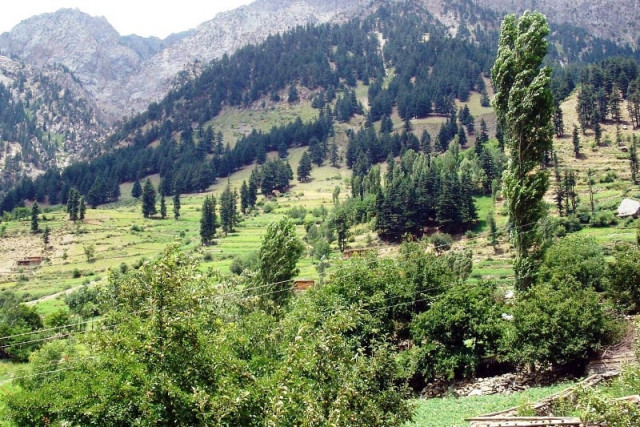Reasearch: ‘Media perception affects tourism potential’
Dr Rehman says tourists are soft targets and if they are targeted, it makes big headlines.

Reasearch: ‘Media perception affects tourism potential’
The tourism industry is considered to have suffered the most from the repercussions of 9/11. However, there has been little research on the perception of violence and instability in areas which were practically untouched by conflicts in the neighbourhood.
A research paper authored by Dr Fazlur Rehman of the Institute of Geography, Urban and Regional Planning at the University of Peshawar and Dr Arndt Holdschalg from the University of Hamburg documents the impact of terrorism on tourism in Chitral.
The study titled ‘War, Terror and Tourism: Impacts of Violent Events on International Tourism in Chitral, Pakistan’, explores the link between international and national events, the role of media as image makers and their collective impact on regional tourism and livelihoods in northern Pakistan.
Dr Rehman, one of authors, told The Express Tribune that the fastest developing economies the world over are tourism-based and generate billions of dollars. The report documents the arrival of foreigners in Chitral from 1973 to 2009. As foreign tourists have to register with police upon arrival, the figures are reliable.
The number of foreigners who visited the district peaked in 1993 when a record 3,054 registered with the police, but it plummeted in the aftermath of 9/11. Foreign tourists numbered 2, 574 in 2001, but dropped down to 372 in 2003, which comes to a staggering 85.6 per cent. However, there was an improvement in 2006 when 1,469 foreign tourists came to Chitral.
After a wave of terrorism hit K-P, this figure dropped to 401 in 2009. Data analysis shows a close correlation between national and international events and the number of tourists.
It points out that the highest number of tourists, 1,361 in 1974, decreased to 619 in the 1980s, because of the Russian invasion of Afghanistan in 1979.
The number of foreign tourists peaked in 1989 at 2,556. It also points out that the Sunni-Ismaili clashes in Chitral in 1982, Shia-Sunni clashes in Gilgit from 1988 and the Russian bombing of a village in southern Chitral in 1985 affected their numbers.
There was great variation in the number of tourists in the 1990s, which recorded a 15.2 per cent decrease during the Gulf War.
The research documents the impact of media coverage of violent incidents on potential tourists’ decisions to visit particular regions of the world.
Dr Rehman said that the tourists themselves are soft targets and if they are targeted, it makes big headlines.
The report points out that as the Himalaya-Karakoram-Hindu Kush region is fraught with political instabilities and violence and given the widespread coverage they get on the media, safety concerns are a major factor for the dwindling numbers of tourists.
At the same time, it points that the events which impacted tourists’ decisions the most were exogenous. In other words, it was the perception created by the media which led to the virtual boycott of Chitral, which was practically unaffected by wars or militancy.
The research points out that 9/11 seriously affected areas where international tourism is an important part of local economy. The authors have also highlighted that the role of mass media is influential and questionable in this regard.
Dr Rehman has suggested that the government prioritise infrastructure development and provide facilities for tourists to attract them in significant numbers.
Published in The Express Tribune, February 12th, 2012.













COMMENTS
Comments are moderated and generally will be posted if they are on-topic and not abusive.
For more information, please see our Comments FAQ